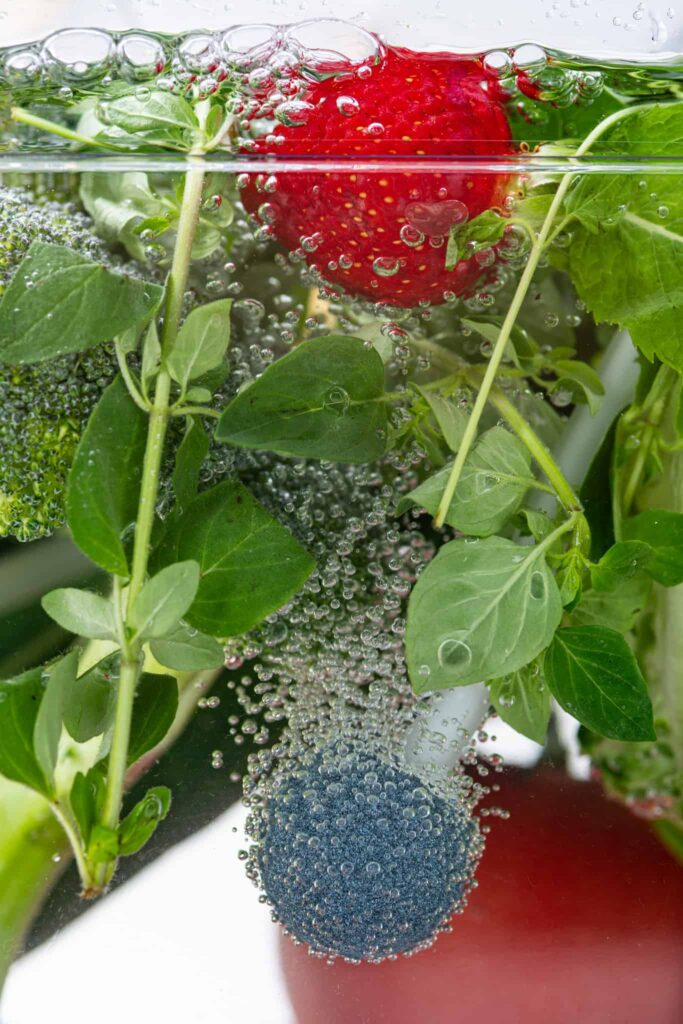
Since we know which plastics and metals are unsafe to be used with Ozone, lets list those that are perfectly fine. When buying the container you should double check what it is made of, sadly most of the office, cloths storage boxes will be unusable. Most of the websites don’t even say what kind of plastic do they sell, if you are lucky enough they will mention that is it BPA free but nothing more. It is advisable to look for food storage containers as those are usually safer and made from food grade materials. So which ozone safe material should you buy?
Glass.
Glass has got an Excellent A rating which means that ozone has got no effect on it and it will last indefinitely. Pros are that is won’t scratch easily when washed. It is transparent which makes the process visually attractive. Unfortunately it might be quite heavy and difficult to handle. It might work if you only ozonate small batches like box of strawberry’s and would definitely work when only ozonating a water, let say a pint or two (you can use a flower vase for that and cover it with cling film). The trouble come when you want you disinfect your weekly shopping, bunch of kale, celery sticks, few apples, bag of carrots…you’ll need something bigger and easier to empty.
Stainless Steel.
Another one from ozone safe materials is 304 or 316 Stainless Steel and it is absolutely safe to use. Taking that you will find the containers with airtight lid in desirable size, it will be a win win situation. Sadly in the UK we weren’t able to find any. There is plenty of boxes on the market but they are either marketed at Stainless steel but without stating the grade or are imported / dropshipped from unknown manufacturers from China in which case you won’t be able to say what those are really made off.
Polycarbonate.
Luckily Polycarbonate plastic has got an excellent A rating and is very safe to use and will last indefinitely. There is plenty of Polycarbonate containers on the market. What you need to look out for is how tight the lid is and what is is made of. We have carefully researched the market and found the box that is working perfectly. We’ve had quite a few in the past but stopped using them after we’ve bought the ozone meter. We’ve discovered that even with the tight lid the ozone would escape easily and the levels measured at 1 m distance from the closed box would become dangerous for humans and animals within 2 minutes. It would be probably fine if used outside but we like to ozonate the vegetables in our kitchen. The box we are offering performed much better with safe amounts of ozone leaking, when used in well ventilated kitchen. The smell of ozone was still there but the levels were below the 0.1 ppm recommended safety levels. The cons of using the Polycarbonate boxes are the lightness of the material, transparency and how easy to clean and empty those are.
Out of ozone safe materials Polycarbonate is our favourite. Our container is very robust and durable to ensure a long life in your kitchen. The white airtight lid equipped with 5mm valve which fits to most of the standard kitchen ozonators. Simply attach the tube coming from your ozone generator to the top of the lid. Connect the second tube with stone to the bottom of the lid so the stone sits inside of the box. Close the lid by pressing on each corner to limit the amount of ozone escaping from the box.
Remember: never breath in the ozone.
Here you can find the table of materials and how they perform with ozone:
| Rating | Description | |
|---|---|---|
| A | Excellent | Ozone has **no effect** on these materials. They will last indefinitely. |
| B | Good | Ozone has minor effect on these materials. Prolonged use with high concentrations of ozone will break down or corrode these materials beyond usefulness. |
| C | Fair | Ozone will break down these materials within weeks of use. Prolonged use with any ozone concentration will break down or corrode these materials beyond usefulness. |
| D | Poor | Ozone will break down these materials within days or even hours of use. These materials are not recommended for any use with ozone. |
| Material | Rating | Material | Rating |
|---|---|---|---|
| ABS Plastic | B | LDPE | B |
| Acetal (Delrin®) | C | Magnesium | D |
| Acrylic (Perspex®) | B | Monel | C |
| Aluminum | C (wet ozone) / B (dry ozone) | Natural Rubber | D |
| Brass | B | Neoprene | C |
| Bronze | B | Nylon | D |
| Buna-N (Nitrile) | D | PEEK | A |
| Butyl | A | Polyacrylate | B |
| Cast Iron | C | Polyamide (PA) | C |
| Chemraz | A | Polycarbonate | A |
| Copper | B | Polyethelyne | B |
| CPVC | A (does get brittle) | Polypropylene | C |
| Cross-Linked Polyethylene (PEX) | A | Polypropylene (glass-filled) (GFPP) | C |
| Durachlor-51 | A | Polysulfide | B |
| EPDM | C (wet ozone) / B (dry ozone) | Polyurethane, Millable | A |
| EPR | A | PVC | A (wet ozone) / B (dry ozone) – does get brittle |
| Ethylene-Propylene | A | PVDF (Kynar) | A |
| Fiber Reinforced Plastics (FRD) | D | Santoprene | A |
| Flexelene | B | Silicone | A |
| Fluorosilicone | A | Stainless Steel – 304/316 | A |
| Galvanized Steel | C | Stainless Steel – Other Grades | B |
| Glass | A | Steel (Mild) | D |
| Hastelloy-C® | A | PTFE | A |
| HDPE | A | Titanium | A |
| Hypalon® | C | Tygon | B |
| Hytrel® | C | Vamac | A |
| Inconel | A | Viton | A |
| Kalrez | A | Zinc | D |
| Kel-F (PCTFE) | A |
